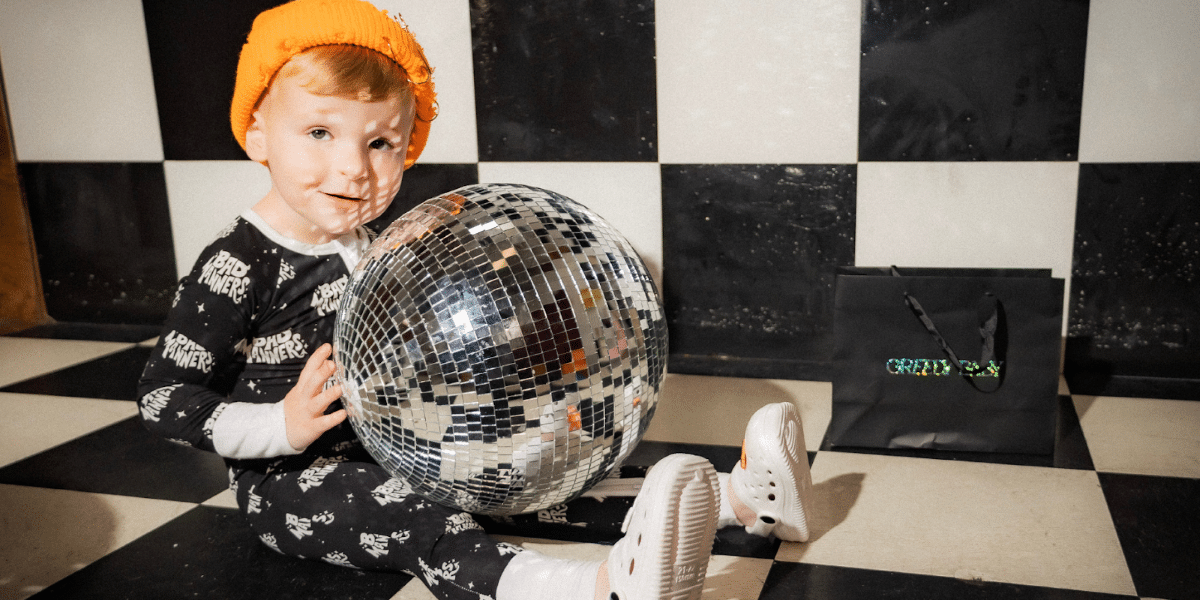By: Esther Gilmore
Parents often wonder why baby clothes tend to look the same. Emilie Bair, founder of Greedy Baby, had the same thought. “We want babies to wear clothing that reflects their uniqueness and personality,” she says.
Most baby clothing features soft pastels and basic designs, but Greedy Baby offers something different with vibrant colors and playful patterns that capture the spirit of childhood. The brand designs clothing that emphasizes comfort, sustainability, and style, offering parents more choices for baby outfits.
Fun and Cozy Fits: Modern Twist on Infant Clothing
Greedy Baby introduces infant clothing with colorful designs that stand out from the usual soft tones. The brand creates playful animal prints, geometric patterns, and bold color combinations that appeal to parents and children. The designs aim to highlight the fun and energy of childhood.
Greedy Baby uses bamboo fabric for its clothing, providing softness and comfort while keeping vibrant colors after repeated washes. The fabric’s breathability and moisture-wicking properties help babies stay comfortable throughout the day. The brand focuses on making good and comfortable clothes for children.
“Our designs reflect the energy and creativity of childhood,” Bair says. “We craft each piece for comfort and to bring joy to parents and children.”
How Greedy Baby Stays Eco-Chic
Caring for the planet has become more important. Greedy Baby acknowledges this responsibility and focuses on sustainability in every aspect of its business. The brand commits to eco-friendly practices beyond bamboo fabric, influencing the production process.
Greedy Baby chooses bamboo as the primary fabric for its clothing. This fast-growing plant needs minimal water and no pesticides, making it a sustainable choice for apparel. The brand sources bamboo from certified sustainable farms, ensuring responsible land use and support for biodiversity. Its manufacturing partners adhere to strict environmental standards, conserving water and utilizing eco-friendly dyes.
“Sustainability drives our mission,” Bair says. “We want parents to feel confident about the environmental impact of their babies’ clothes and style.”
Bamboo fabric offers practical benefits as well. Its natural hypoallergenic properties make it gentle on sensitive skin, and its temperature-regulating qualities help babies stay comfortable in warm and cool weather. This versatility gives parents functional clothing options throughout the year.
Shopping Made Simple: Greedy Baby’s User-Friendly Online Experience
Shopping can feel overwhelming for busy parents. Greedy Baby simplifies the process with an easy-to-use online shopping experience that helps parents quickly find the right clothes. Its website, greedybaby.co focuses on straightforward navigation and detailed product descriptions, with images showcasing the vibrant designs.
The site organizes products into intuitive categories and offers a smart search function, making it easy for parents to locate what they need. Each product page shows multiple views of the items, enhancing the shopping experience.
Greedy Baby addresses common concerns parents have when shopping for baby clothes online. The size guide helps parents choose the right fit, and the simple return policy provides peace of mind.
Features like wishlists and gift registries make future purchases more convenient. Customer reviews allow parents to share their experiences and help others make informed decisions. “We know parents juggle many tasks,” Bair says. “We want to make shopping for baby clothes easier and more enjoyable.”
Bringing Sustainable Baby Fashion to Families Everywhere
Greedy Baby already sells internationally and continues to grow its global presence. The brand wants to bring its blend of style and sustainability to families across different cultures, understanding that the need for comfortable and stylish baby clothing is universal.
With international shipping already in place, parents worldwide can easily access Greedy Baby’s clothing. The brand is also exploring partnerships with more global retailers and e-commerce platforms to expand its reach and make its products more accessible.
“We’re excited to connect with parents worldwide,” Bair says. “Our focus is on creating products that resonate with modern families while adapting to cultural preferences without compromising our core values.”
The Visionary Behind the Brand: Meet Emilie Bair
Emilie Bair, the founder of Greedy Baby, brings creativity to the brand. With a background in banking, Bair shifted into baby fashion after feeling frustrated by the lack of stylish options for her children. She recognized a gap in the market and decided to act on it.
That frustration drove her to create Greedy Baby. Without formal training in fashion, Bair relied on her passion and creativity to bring her ideas to life. She immersed herself in textile design and sustainable manufacturing, collaborating with experienced designers and eco-conscious suppliers.
“I never thought I would run a baby clothing company,” Bair says. “But when I saw the need for something different, I felt compelled to take action.”
Bair aims to change how parents view children’s fashion by proving that style and sustainability can coexist. She applies the precision she learned in banking and pairs it with the creativity needed in fashion.
Greedy Baby continues to grow as Bair focuses on the brand’s core values—creating joyful clothing that families can trust. She remains dedicated to exploring new sustainable materials and production techniques.
“We share a vision of vibrant, sustainable, and joyful childhood,” Bair explains. Greedy Baby stands out in a market filled with conventional options, offering bold designs, eco-friendly materials, and a parent-friendly shopping experience. The brand’s journey begins, offering a future where dressing little ones blends style, sustainability, and thoughtful care.
Published by: Annie P.

















